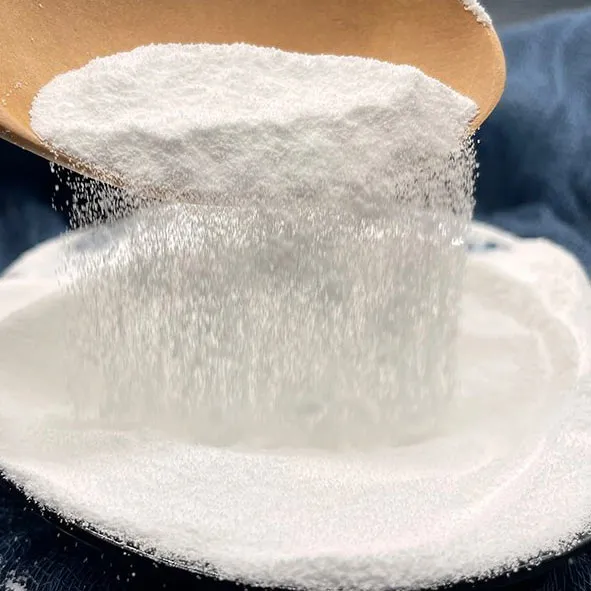
Hydroxypropyl Methylcellulose Phthalate Enteric Polymer
A Field Note on Hydroxypropyl Methylcellulose Phthalate (HPMCP): Trends, Specs, and Real-World Use
I’ve watched enteric coatings swing from niche to necessity. And, to be honest, few materials have earned their keep like Hydroxypropyl Methylcellulose Phthalate. It’s the workhorse polymer behind pH-triggered protection for acid-sensitive APIs—think pancreatic enzymes, PPIs, and certain probiotics—yet it still flies under the radar outside formulation circles.

What it is and why the market cares
Hydroxypropyl Methylcellulose Phthalate is an enteric film-former that dissolves above a set pH—typically between 5.0 and 5.5—so tablets, pellets, and microcapsules survive the stomach and release in the intestine. The trend? Cleaner solvent systems, faster pan runs, and tighter release windows. Many customers say switchovers from acrylate systems were smoother than expected; some even report better mouthfeel and fewer taste-mask failures.
Typical specs (indicative, real-world use may vary)
| Property | Typical Range | Notes |
|---|---|---|
| pH dissolution threshold | ≈5.0 (HP-50), ≈5.5 (HP-55/55S) | Select based on target intestinal segment |
| Viscosity (2% in acetone/EtOH) | 50–200 mPa·s | Impacts sprayability and film build |
| Phthalyl content | 24–35% | Correlates with pH response |
| Loss on drying | ≤5% | Per pharmacopeial monographs |
| Residue on ignition | ≤0.1% | Ash specification |
Process flow (how teams really run it)
- Materials: Hydroxypropyl Methylcellulose Phthalate, plasticizer (TEC or DEP ≈10–20% of polymer), anti-tack (talc), solvent system (EtOH/water or acetone/EtOH), pigments as needed.
- Solution prep: Gradual polymer addition under high shear; rest to de-bubble 30–60 min.
- Coating: Inlet 45–60°C, bed 30–40°C; spray 3–8 g/min per pan (depends on scale); target gain 4–10% w/w.
- Curing: 40–60°C for 2–6 h to stabilize film.
- Testing: Acid stage (0.1 N HCl, 2 h, no cracking); buffer stage (pH 6.0–6.8) Q release by 30–60 min.
Service life: properly packed polymer stores 24–36 months at 15–25°C; coated products commonly show 24–36 months stability if moisture is controlled (yes, real-world mileage varies).

Applications and quick wins
- Enteric tablets/capsules for PPIs, enzymes, certain antibiotics.
- Pellet layering in Wurster for multiparticulates—surprisingly forgiving on scale-up.
- Microcapsule matrices for taste masking and delayed release.
One midsize EU generics team shared they cut disintegration OOS by 60% after swapping to Hydroxypropyl Methylcellulose Phthalate HP-55 and adding a short post-cure. Small change, huge stress relief.
Compliance, testing, and data points
Meets pharmacopeial monographs (USP/EP/JP). Residual solvents should align with ICH Q3C; functionality by USP / dissolution, and visual/mass gain by in-house SOPs. Typical acid stage failure rate in pilot runs is under 2% after cure; lot-to-lot viscosity RSD often ≤5% with reputable suppliers.
Vendor snapshot (illustrative)
| Vendor | Key Grades | Certifications | MOQ | Customization |
|---|---|---|---|---|
| Tangzhi Cellulose (Origin: Room 2308, Dongsheng Plaza 2, Shijiazhuang, Hebei, China) | HP-50, HP-55, HP-55S | ISO 9001, CoA, DMF-ready (on request) | ≈25 kg | Viscosity tuning, pre-mixes |
| Shin-Etsu AQOAT | HP-50, HP-55, HP-55S | GMP excipient, multi-Ph. Eur./USP | ≈20–25 kg | Technical onboarding |
| Regional GMP Supplier | HP-50, HP-55 | ISO/IPEC | ≈25–50 kg | Limited |
Customization tips
Ask for viscosity windows tied to your spray setup, plasticizer compatibility sheets, and pre-dispersed blends if you’re chasing fast changeovers. For strict nutraceutical claims, confirm allergens and phthalate disclosures early—saves headaches.
Mini case study
A Southeast Asian plant reformulated a PPI pellet: moved from 8% to 6% weight gain using Hydroxypropyl Methylcellulose Phthalate HP-55S plus 15% TEC. After a 3-hour cure at 50°C, acid uptake dropped below 5%, and buffer stage T90 hit 35 minutes at pH 6.8. Scale-up held with only a 1°C bed temp nudge. Not flashy—just solid engineering.
References
- USP–NF Monograph: Hypromellose Phthalate (HPMCP). United States Pharmacopeia.
- European Pharmacopoeia (Ph. Eur.) Monograph: Hypromellose Phthalate.
- Japanese Pharmacopoeia (JP): Hypromellose Phthalate specifications.
- ICH Q3C (R8): Impurities—Guideline for Residual Solvents.
- ICH Q6A: Specifications—Test Procedures and Acceptance Criteria.
- IPEC-PQG GMP Guide for Pharmaceutical Excipients.
- FDA Inactive Ingredient Database (IID): Listing for Hypromellose Phthalate.
-
Reliable Powdered Cellulose Supplier: Quality, Sustainability & InnovationNewsNov.24,2025
-
Find Trusted Microfibrillated Cellulose Suppliers for Sustainable Industrial SolutionsNewsNov.24,2025
-
Leading Methocel Suppliers: Quality, Innovation & Sustainability in Methylcellulose SupplyNewsNov.23,2025
-
Reliable Hydroxyethylcellulose Suppliers for Industry & Sustainability | Tangzhi HPMCNewsNov.23,2025
-
Top Ethyl Cellulose Supplier – Quality, Sustainability, and Industrial SupportNewsNov.23,2025
-
Trusted CMC Powder Suppliers for Food, Pharma & Industrial Use | Tangzhi HPMCNewsNov.22,2025





















